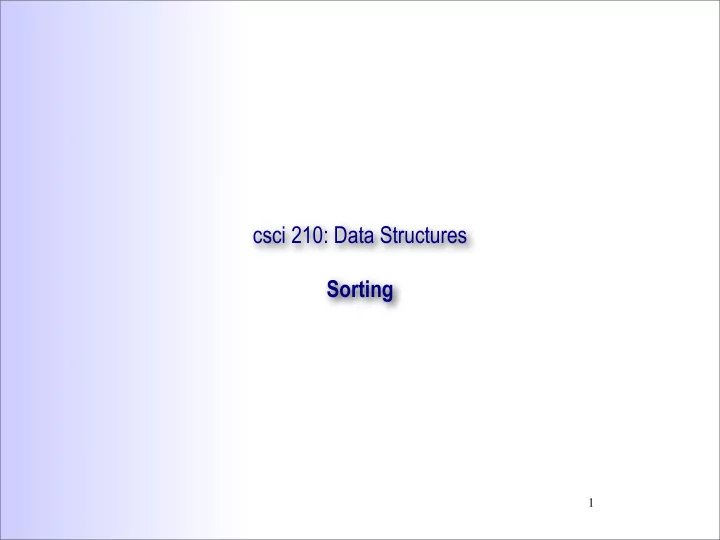

csci 210: Data Structures Sorting 1
Problem Input: an array of elements that can be compared to each other • A = [x1, x2, x3, ..... xn] Output: • a new array B that contains the elements in A in increasing order • B[0] <= B[1] <= B[2] .... • or the same array A, rearranged so that the elements are in increasing order • A[0] <= A[1] <= A[2] ... Permuting the input array is advantageous because it does not use extra space (memory). A sorting algorithm that permutes the input array and does NOT create a new output array is called “in-place” 2
Sorting algorithms Bubble-sort • idea: a pass through the array swaps elements that are out-of-order • need n-1 passes in the worst-case • analysis: O(n^2), in-place Insertion sort • idea: the elements processed so far are kept in order. take the next element in the input and insert it in the right spot in the sorted array. • analysis: O(n^2), in-place Selection sort • idea: select the smallest, put it in position 0; select the next smallest, put it in position 1, and so on. • analysis: O(n^2), in-place Mergesort • idea: split into 2 halves. sort each half recursively. merge. no proof here [in csci 231] • analysis: O(n lg n), not in-place Quicksort • idea: pick an element and call it pivot. re-arrange the input so that all element <= pivot are to its left, and all element > pivot are to its right. sot each part recursively. no need of merging. no proof here [in csci 231] 3 • analysis: O(n^2), in-place
Recommend
More recommend